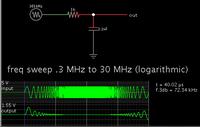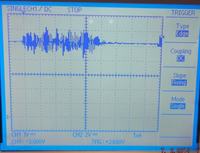rhnrgn
Member level 5
Hello Friends,
1_I am going to filter above 100Khz. Esspecially between 5 MHz-30Mhz band. Am i going to use LC filter or RC filter?
Now i have 1k Ohm and 1uf RC filter but it is not working as it is use to be in theoretically. It passes some noise above 5 MHz. I am using ceramic caps.
I am thinking about using capacitors in parallel 1uf-100nf-10nf-1nf.
2_If i dont have any affraid about voltage drop on resistance, isn't it better to use resistance instead of inductance.(I am talking about 5Mhz-30Mhz bandwidth)
Thank You
1_I am going to filter above 100Khz. Esspecially between 5 MHz-30Mhz band. Am i going to use LC filter or RC filter?
Now i have 1k Ohm and 1uf RC filter but it is not working as it is use to be in theoretically. It passes some noise above 5 MHz. I am using ceramic caps.
I am thinking about using capacitors in parallel 1uf-100nf-10nf-1nf.
2_If i dont have any affraid about voltage drop on resistance, isn't it better to use resistance instead of inductance.(I am talking about 5Mhz-30Mhz bandwidth)
Thank You



